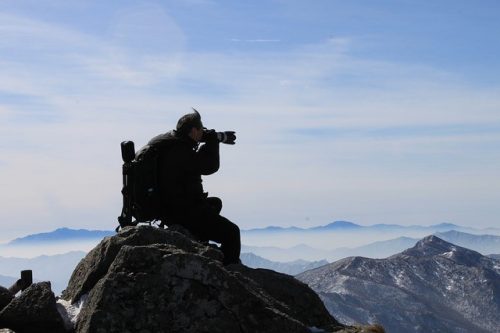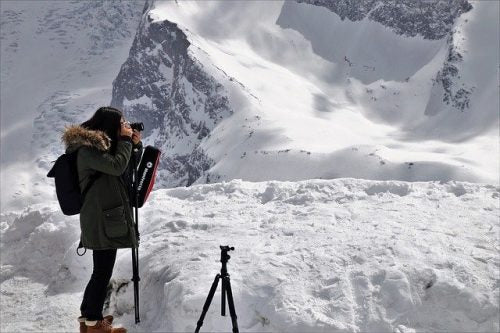For photographers in the northern hemisphere, it’s that time of year again. The time when the sun is at a lower angle in the sky, the days are shorter, and the temptation to stay inside is greater. When the temperatures drop and the cold wind is blowing, it can be difficult to get motivated to go out and shoot cold weather photography. Cold weather photography brings with it a host of challenges that don’t exist in the warmer months, and being prepared can make all the difference. We have some cold weather photography tips you can use to get your gear and yourself prepared and make cold weather photography a little more enjoyable.

Dress for Success
The most important item for successful cold weather photography is your choice of outerwear. The goal is to find clothing that protects you from the wind and cold, and also allows you to move around freely and operate the DSLR camera in cold weather. It’s best to wear layers, and adjust according to the conditions of the day. As a general rule of thumb, the base layer for top and bottom should be something synthetic that wicks moisture and dries quickly. It seems to be impossible to find gloves that have enough insulation to keep your hands warm while at the same time allowing enough dexterity to operate your camera's controls. One thing that works well for cold weather photography is to use a thin liner glove made of synthetic or wool material, with a good insulated mitten on top. This allows you to keep the mittens on when not shooting and take one off when you need to manipulate the camera.

Protect Your Gear
Protecting your camera in cold weather is never a bad idea. Even if you’re using cameras and lenses that have weather sealing, it’s still good to take some precautions.
Tripod
While taking cold weather photography shots, simple tasks like setting up your tripod can become painstaking. A tripod from Beachcamera.com with big locking knobs that you can tighten with your mitts on is a huge asset. When you set your tripod down in the snow, test it to be sure that it’s stable. The snow may seem steady, but the tripod might still sink when you add the camera in cold weather.

Camera
It’s really quite amazing how well DSLR cameras and action cameras from Beachcamera.com work in cold temperatures. The battery will always be the weakest link in the system, and you’ll need to keep a close watch on the power meter. When it gets low, swap the battery for a warm one. Carry two spares inside your jacket. Once you’ve reheated the cold battery, it will regain most of its charge and will be good to use again. In very low temperatures, the LCD screen on the top of the camera will become sluggish and eventually fade out completely. Fortunately, the rear display screen is immune to this issue, so you can use it to monitor and adjust your settings. If you’re taking aurora photos at night, use a headlamp with a red filter on it to help navigate your buttons. One of the best cold weather photography tips is to use a cable release, and stuff it inside your left mitt. That way you can operate the camera shutter with toasty warm fingers.
Lenses
Perhaps the biggest challenge with lenses in cold weather photography is trying to use polarizers and neutral density filters. They can’t be manipulated with mitts on. The only solution is to use thin gloves and work as quickly as possible. Always carry a lens blower in a pocket to remove any snow that might fall on the filters. A blower is also handy for getting rid of snow that might accumulate inside a lens hood on your camera in cold weather.

After the Shoot
When packing up after your cold weather photography shoot, remove the lens and attach the caps to both the lens and camera body. Then seal the camera in a zip-top bag before bringing it indoors. Leave the lenses and other gear inside your camera bag, and be careful not to open the bag for several hours until it has warmed up to room temperature. This will avoid condensation or ice formation on your equipment. Once it’s at room temperature you can remove it from the plastic bag and open the compartments to access the memory card and battery. Winter can be a fantastic time for photography, and being properly prepared can make it all the more enjoyable. Don’t hesitate to get out there and make the most of cold weather photography on a crisp winter day.






































